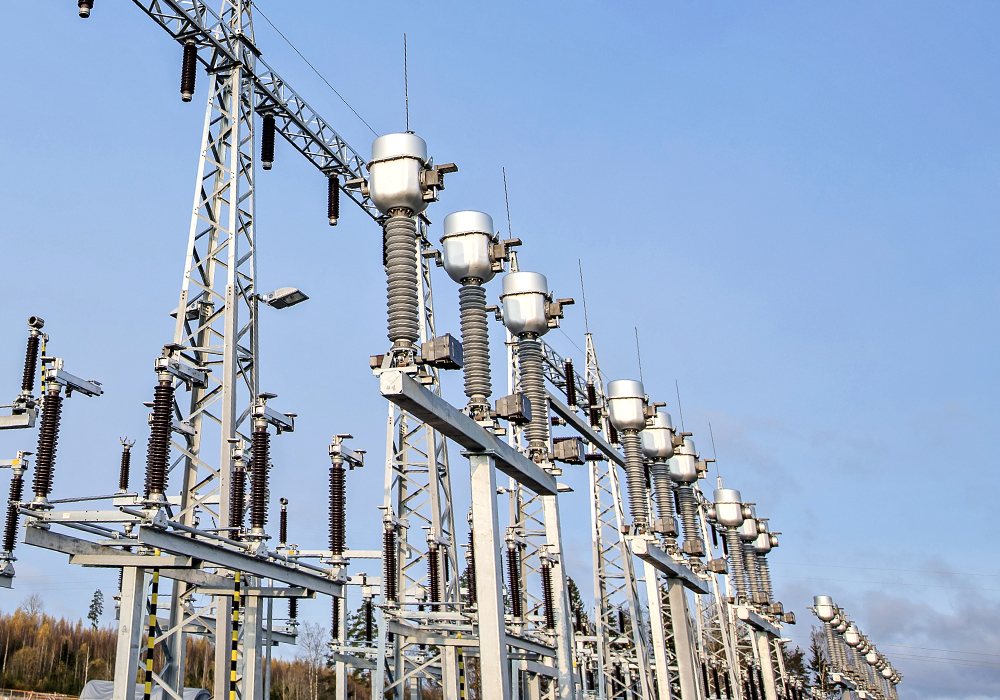The transmission reliability rate of Finland’s main grid is almost 100 per cent, but there are some variations depending on the connection method. The system security is at its weakest when customers are connected to long transmission lines on the main grid by branch lines. These customers can suffer outages if any faults or maintenance outages occur on the trunk line and the lines connecting to it.
Fingrid has mapped the main grid transmission lines with the highest numbers of outages for electricity consumers. For example, there are long sections of line of this type in North Karelia, where customers also have long connecting lines.
“We invited customers and contractors to join us in thinking up a cost-effective solution for reducing the inconvenience caused by outages. The solution identified during these discussions was to build connection stations. We will now set about building them together,” says Antero Reilander, Customer Manager at Fingrid.
Expected outcome: High-quality electricity
Outokummun Energia’s electricity network provides power to a large number of industrial companies, particularly in the metal industry. CEO Juha Sotikov says that customers’ requirements include high-quality electricity.
His example is Fingrid’s 110-kilovolt line between Kontiolahti and Alapitkä, which runs for more than 140 kilometres on the main grid. This stretch of line has suffered a number of disturbances. Conversely, their own 15-kilometre branch line rarely develops any faults.
“Typically, lines running through the Eastern Finnish terrain have been sensitive to faults, and lightning has been a particular cause of disturbances. There have been more brief reclosure outages than on our own medium-voltage network.”
Jukka Ahonen, Network Development Manager from PKS Sähkönsiirto, has observed problems on the same stretch of line, as they also affect PKS Sähkönsiirto’s customers. It is important that development work is underway to reduce the number of disturbances.
“High-quality electricity for our customers is an important success factor for us. It is good that Fingrid has taken the initiative to improve system security.” Ahonen says.
Long transmission line into two shorter sections
Sotikov and Ahonen are happy that the problem is being addressed as a joint effort. Outokummun Energia has four substations, and they are supplied with electricity from two directions. Two of the substations are connected to the Kontiolahti–Alapitkä line and two are connected to the Kontiolahti–Varkaus line.
PKS Sähkönsiirto is the larger of the two network companies, and it has a total of 35 substations. Seven of these are connected to the two aforementioned main grid lines. According to Ahonen, the substations serve a catchment area covering approximately 17,000 customers, all of whom are affected by disturbances on the transmission lines.
Fingrid, PKS Sähkönsiirto and Outokummun Energia have agreed that Fingrid will construct a connection station on both stretches of main grid line. The connection stations should be built in 2022. Sotikov expects the new stations to improve the quality of electricity and the security of energy supply substantially.
“A connection station located in the right place divides a long transmission line into two shorter sections. An individual disturbance in the main grid cannot then affect the customers connected to the line branch station. In the event of large-scale disruption, it is possible to use the other point of connection to the main grid as a secondary power supply.”
Reilander says that connection stations are a lighter-weight alternative to main grid substations.
“Connection stations are reliable but are minimalist switching stations with no room for expansion. Connection stations cost about half as much as normal substations.”
Fewer disturbances, more connection points
All three parties will pay some of the costs of the two connection stations. Ahonen says that they were unsure whether to get involved. They agreed after considering the broader benefits, as well as the opportunity to tackle the impacts of disturbances.
“In the future, we will be able to use our own electricity network more intelligently. We can increase the power capacity and the system security of the network by having substations in the right places.”
Sotikov agrees with Ahohen that the investment will be good for the basic infrastructure over the long term.
“This is an important project for everyone involved, and we all have the same goal in our sights.”
Reilander emphasises the fact that planned maintenance outages can affect customers as well as disturbances. The connection stations will also reduce the area of impacts of these. And the role of renewable energy generation should not be forgotten.
“It is possible to connect new electricity generation plants to the stations; in the future, for instance wind turbines.”
Action on several fronts
The disturbances on Fingrid’s main grid in 2019 caused connection points to be without electricity for 4.3 minutes on average. There were 227 disturbances, causing customers an average of 0.18 outages lasting more than 30 seconds per connection point.
These figures do not include rapid reclosures – Reilander says that Fingrid is also focusing on addressing the impacts of these. Although Finland’s main grid has one of the highest levels of system security in Europe, there is still room for improvement.
“Faults in the electricity network cause harmful voltage dips for critical industry. We aim to mitigate voltage dips by improving relay protection.”
One area for development is in improving fault location on transmission lines. The aim is to find the locations of faults to the nearest tower. This involves forecasting certain faults, such as ice loads on lightning conductors.
“We are equipping the transmission lines on the main grid with a system for locating travelling wave faults. Following the pilot phase, we will also offer the system to our customers.”







